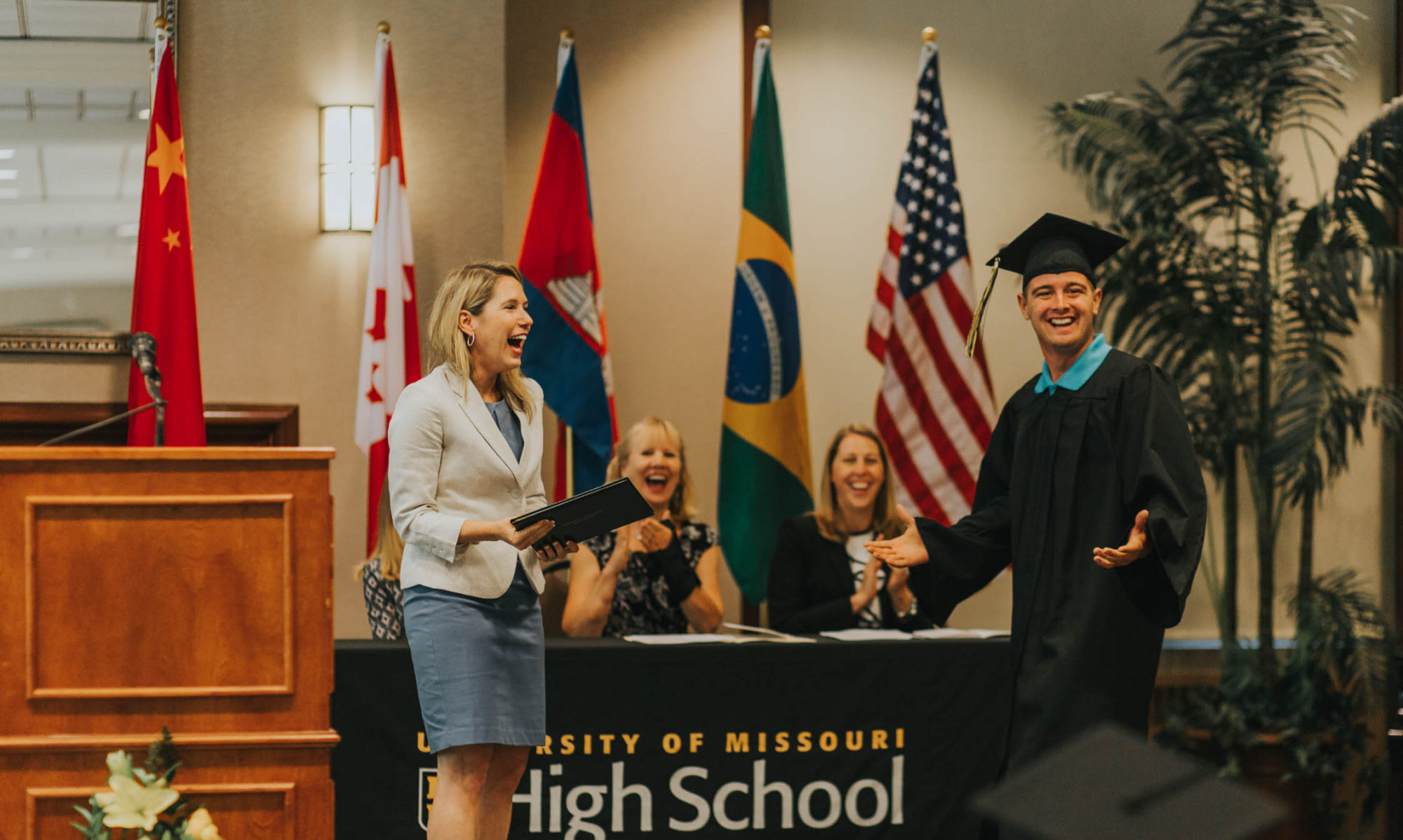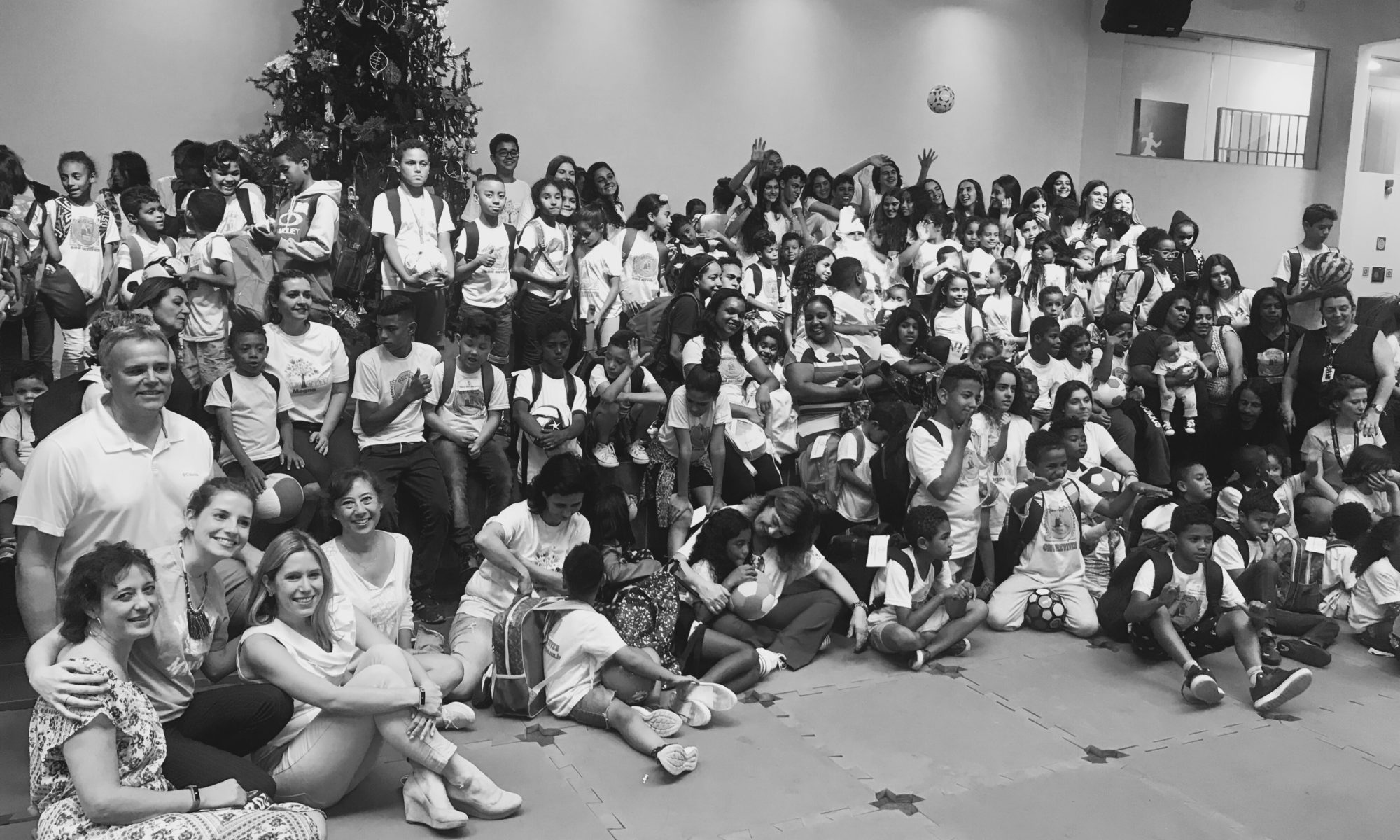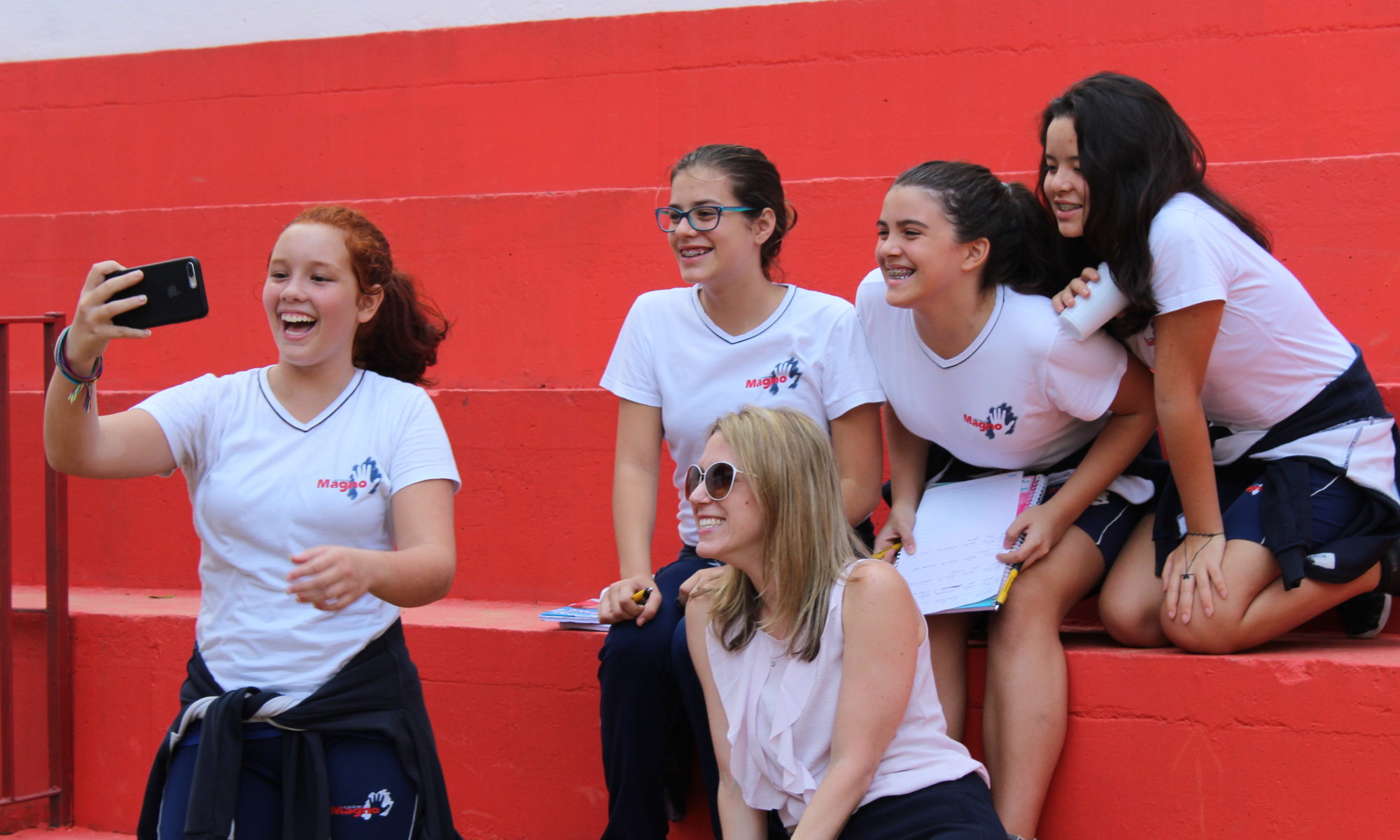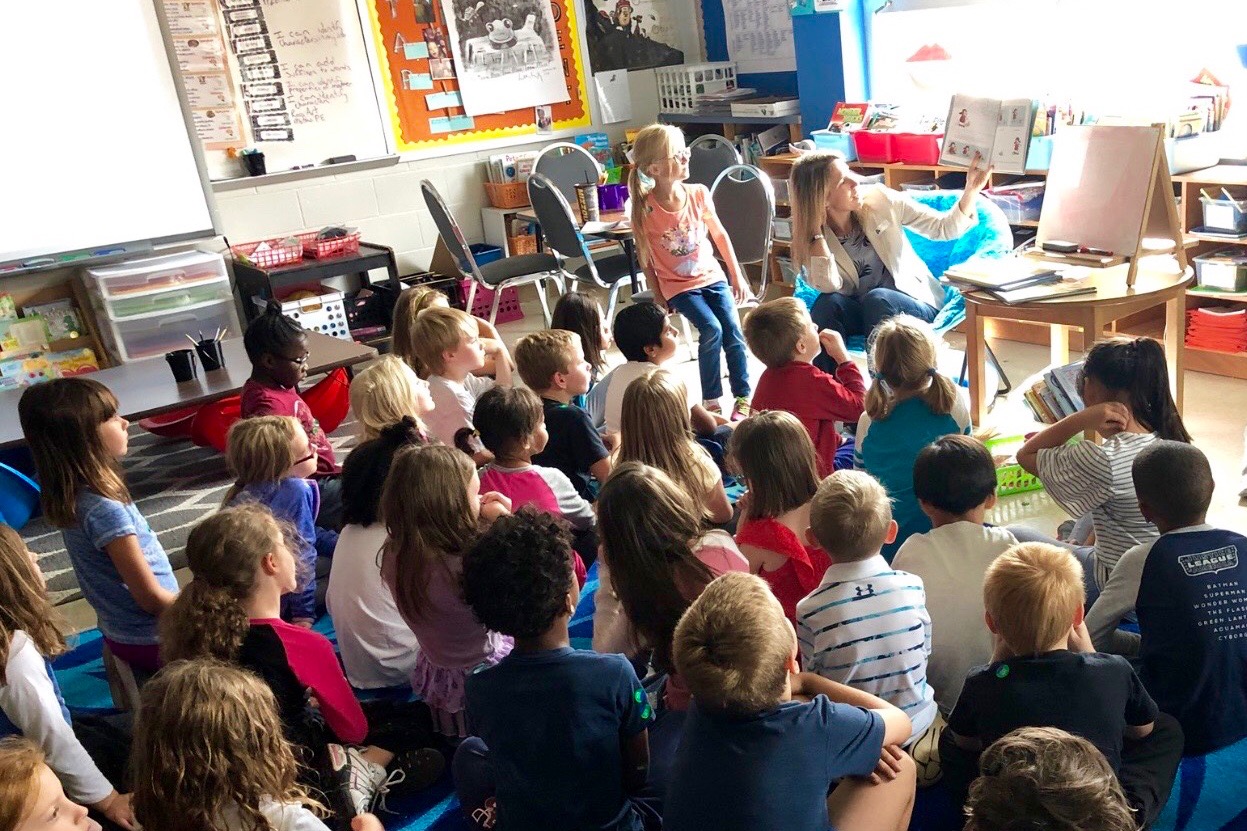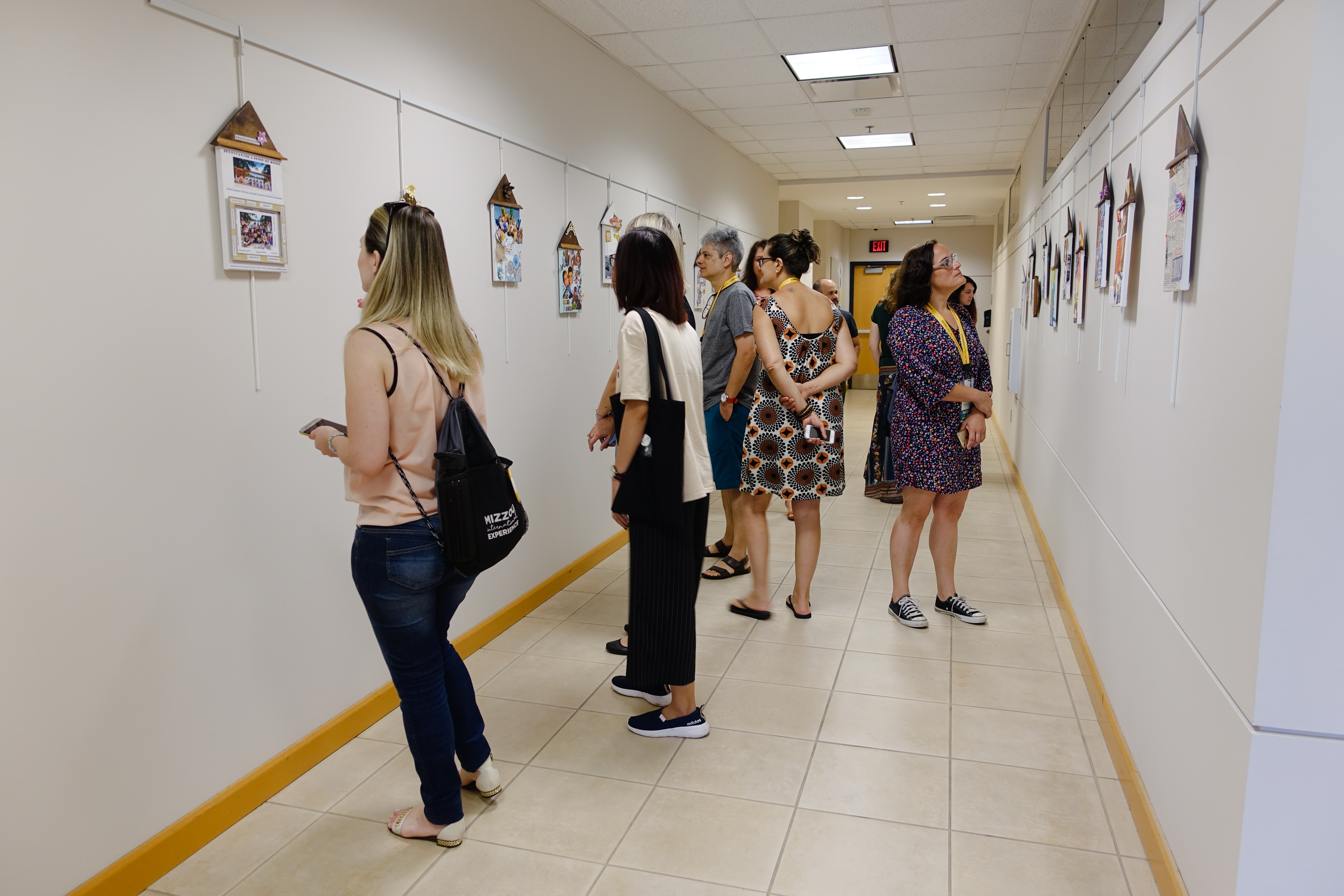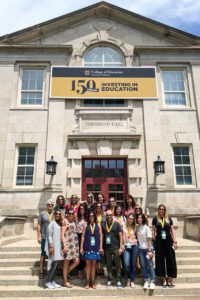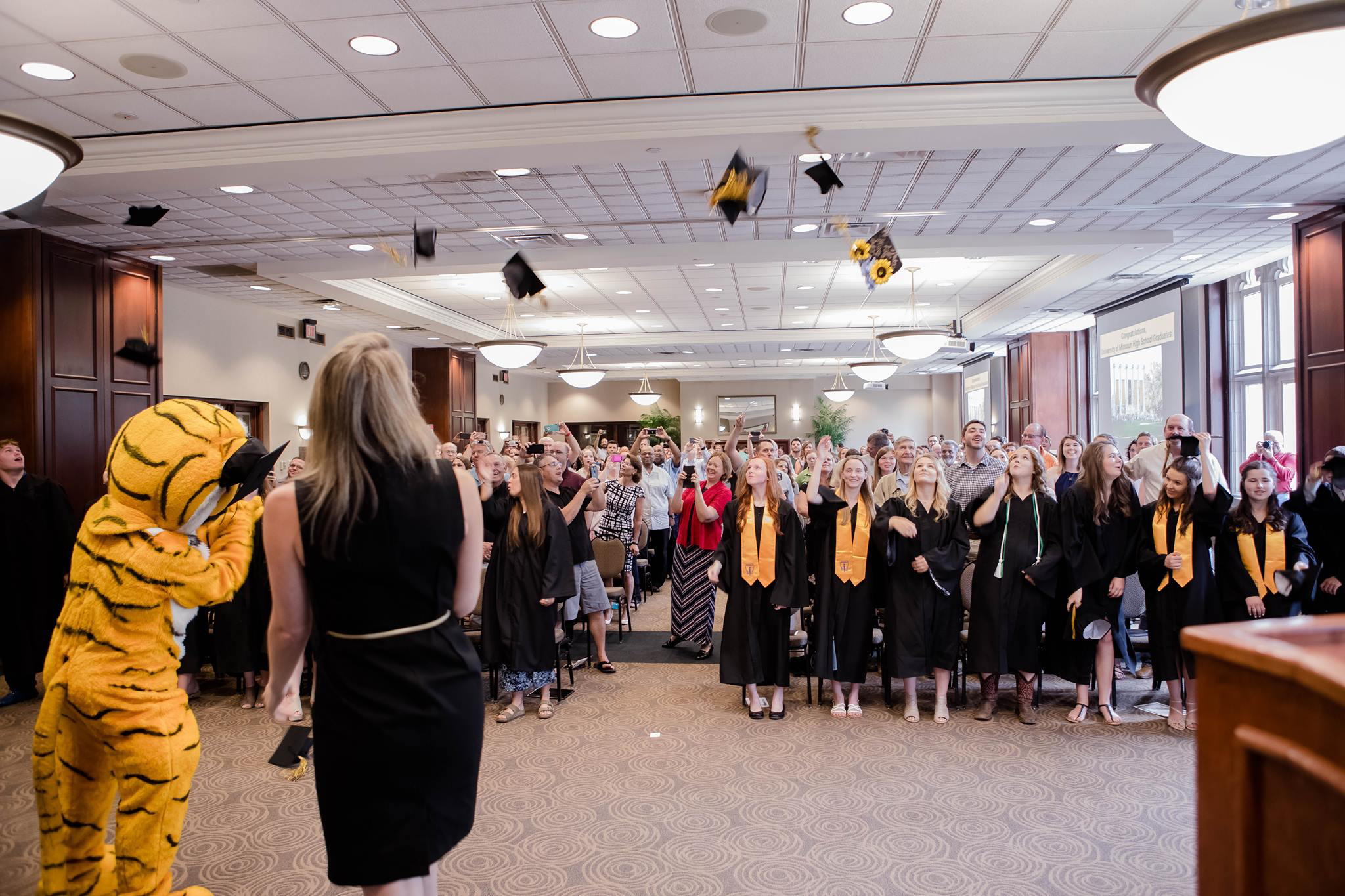In a school gymnasium in São Paulo, I find myself in the middle of a capoeira circle twisting into unique inversions. Capoeira is a popular Brazilian form of dance fighting with roots in Africa. My teacher is eight-years-old, bright-eyed, and clearly has bones made of rubber. I always learn something new when I visit schools and Colégio Magno, a private school in the middle of the city, is home to all matter of creative classes. Today isn’t an ordinary day at Colégio Magno though. If fact my friend Luiza who coordinates the High School and Middle School programs has invited our team to join them for a special community engagement project.
An enthusiastic group of children are pining for sausage and boiled egg. Their middle school “pizza tutors” look at me and laugh as children crawl over my lap to get to the cheese and other toppings. A tiny boy of maybe four, tugs my arm and asks “Posso comer um ovo?” (May I eat some egg?) Having no authority in this space, I tell him, “Sure!” Within two minutes all of the egg in the bowl has evaporated. As a foster-adoptive mother and as a former inner-city school teacher, I know about working with hungry kids.
Children’s Rights are Human Rights
Globally over 900 million people experience food insecurity. A majority of these people are children. For the 154 children visiting today from Reviver Recica, security, food or otherwise, has often been tumultuous. Colégio Magno has had a long standing partnership with Reviver Recica, an NGO that started in 2005. Their website says, “Com muito amor e dedicação, proporcionamos às crianças da comunidade a oportunidade de um futuro longe das drogas e do crime. Fazemos transformações na vida desses futuros adultos através do processo de aprendizado…”(“With much love and dedication, we provide children of our community with future opportunities away from drugs and crime. We are transforming these futures through a process of learning.”) Some of the children at Reviver Recica are orphans, some are homeless, some have families that can’t provide care right now, or can’t provide care before or after school.
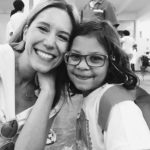 Her name is E—–. Just like my daughter she wears bright-colored glasses and has the kind of hair that won’t stay in a ponytail. Also like my daughter she asks a million questions and is seven-years-old. The families at Colégio Magno have collected and stuffed backpacks full of gifts for each child from Reviver Recica. E—– asks me to open her backpack with her. The enthusiasm and joy on her face is unforgettable. Almost all the children receive new shoes (which they put on immediately), art/school supplies, and a toy. E—– and I organize all of her new markers, crayons and paints no less than 7 times. We trade glasses for a few moments, laughing as she models my huge reflective sunglasses and I her tiny bright red frames. She grabs my phone and asks me to take the photo reposted here with permission.
Her name is E—–. Just like my daughter she wears bright-colored glasses and has the kind of hair that won’t stay in a ponytail. Also like my daughter she asks a million questions and is seven-years-old. The families at Colégio Magno have collected and stuffed backpacks full of gifts for each child from Reviver Recica. E—– asks me to open her backpack with her. The enthusiasm and joy on her face is unforgettable. Almost all the children receive new shoes (which they put on immediately), art/school supplies, and a toy. E—– and I organize all of her new markers, crayons and paints no less than 7 times. We trade glasses for a few moments, laughing as she models my huge reflective sunglasses and I her tiny bright red frames. She grabs my phone and asks me to take the photo reposted here with permission.
Big Ideas and Bigger Hearts
Reviver Recica was founded and continues to be run by Vanessa, a woman with a great idea and an even bigger heart. I had the joy of meeting her at this special event.
And although I know this, I am struck again by the power of hope, love, and creativity. These forces can truly change the world for others.
Reviver Recica does not receive any government funding and is completely run by volunteers and donations. Their goal is to transform the local community through love. They currently serve 250 children ages 1-14. In talking about the organization, a teacher tells me, “Oftentimes children just show up.” All the children receive three meals a day, plus a snack. They also receive homework help and additional lessons in art, culture, sports, literacy, languages, music, dance, capoeira, and theater. There is no cost to the children or their families. Most importantly these children are loved with a kind of love that says I see you, I want to keep you safe, and believe you can have a different future.
A Kind of Noel
The word noel comes from the Latin natalis meaning “relating to birth.” It has obvious connections to Christmas in the Christian tradition and is now most frequently used simply to refer to a Christmas carol. During the event, we sit in a classroom with children and adults singing the Hallelujah chorus. One child plays the violin and another a half-sized cello. Our voices join in an awkward beauty that makes me pause and appreciate the fact that I am experiencing something so true and special with others.
I think today was a kind of noel for all of us. On the drive back we share personal stories. Each of us has our own story to tell from the day: stories of the children we met, our own connections to poverty, or caring for those in crisis. We brainstorm how we can support and stay connected with Reviver Recica, we feel grateful for Vanessa and the volunteers, and we appreciate the ongoing relationship that Colégio Magno has with this organization. Their relationship is built on reciprocity; students and staff from Colégio Magno visit the children at Reviver Recica and the children from Reviver Recica also come to Colégio Magno for events like the Christmas party today.
Standing with Love
Can the world be transformed through partnerships such as these? While I consider this question, I think of E—–‘s enthusiasm, the middle school students’ laughter, the strength of community, the beauty of voices raised in song, the invitation to blur boundaries across socio-economic status and circumstance, and of course the power of love.
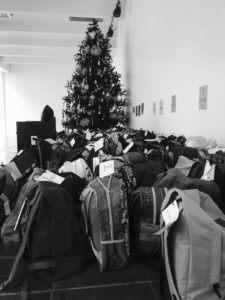
This holiday season and always, may we all look for ways to stand with love and action on the side of children.
With hope, Dr. KFW
If you are interested in donating to Reviver Recica, please follow this link to their organization.
